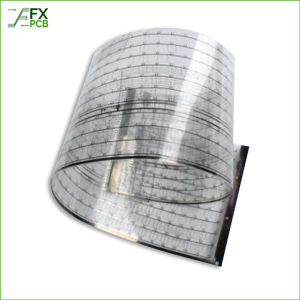
Have you ever wondered how electronic devices, from your smartphone to a spacecraft, manage to control electricity? PCB resistors, or printed circuit board resistors, are among the essential components that make it all possible. In this article, we’ll dive deep into the world of PCB resistors, exploring their types, functions, and how to decipher the enigmatic resistor color code. So, let’s get started!

The modern-day electronics world depends heavily on the Printed Circuit Boards (PCBs) as its backbone. A PCB is a medium to transfer the current through its copper pathway and it dissipates the heat to keep the tiny yet highlycomplex electronic equipment on it in perfect condition.
If you are to get the best PCBA and PCB for your digital devices, you have to know this PCB assembly process thoroughly. FX PCB with its years of experience understands this need and thus, we present you the detailed guideline.
FX PCB dont follow the standerd manufacturing process is no exception to it. Our process includes solder pasting on the PCB base, placing the electronic components in the right place, soldering them with the PCB, checking the accuracy, final inspection, and delivery to customers.
At their core, PCB resistors are passive electronic components designed to limit the flow of electric current in a circuit. They are used to create precise levels of resistance, which helps regulate voltage and current flow, preventing damage to sensitive components. PCB resistors are vital for controlling LED brightness, setting gain in audio amplifiers, and countless other applications.
PCB resistors come in various forms, each designed for specific purposes. Let’s take a closer look at the most common types:
SMD resistors are tiny components that are directly mounted onto the surface of a PCB. Their small size makes them ideal for compact electronic devices and high-density circuit boards.
Unlike SMD resistors, through-hole resistors have leads that pass through holes in the PCB. They are sturdier and easier to replace, making them suitable for applications requiring durability.
Variable resistors, also known as potentiometers, allow users to adjust resistance manually. They are commonly used for volume control and in various tuning circuits.
Network resistors consist of multiple resistors combined in a single package. They are useful for simplifying circuit design and saving space.
To understand how PCB resistors work, let’s imagine them as narrow paths that impede the flow of electric current. When current passes through a resistor, it encounters resistance, which leads to a voltage drop across the component. This drop in voltage ensures that the current remains in check, preventing electronic components from receiving excessive power.
Selecting the correct resistor for a particular circuit is crucial for optimal performance and reliability. Using the wrong resistor can lead to various issues, such as incorrect voltage levels and overheating. Understanding the key resistor ratings can help you make the right choice:
The power rating of a resistor indicates the maximum power it can safely dissipate without getting damaged. Choosing a resistor with an inadequate power rating can cause it to burn out.
The voltage rating specifies the maximum voltage a resistor can withstand without breakdown. Exceeding this limit can lead to insulation failure and component damage.
The temperature coefficient describes how much a resistor’s resistance changes with temperature fluctuations. High precision applications demand resistors with low temperature coefficients.
Tolerance denotes the permissible deviation from the resistor’s nominal value. Precise circuits need resistors with low tolerance for accurate results.

The resistor color code is a visual system used to represent a resistor’s resistance value. Each colored band on the resistor corresponds to a numeric value, allowing you to determine its resistance with ease.
Reading the resistor color code might seem daunting at first, but it’s a straightforward process once you understand the system. Resistor color codes consist of a series of colored bands that represent the resistance value, tolerance, and sometimes the temperature coefficient. Let’s break down the steps to read the resistor color code:
Identify the Number of Bands: Most resistors have four or five colored bands. A four-band resistor indicates a standard value, while a five-band resistor offers greater precision.
Determine the Order: The bands are read from left to right. The first two bands represent the significant digits, the third band indicates the multiplier, and the fourth band (if present) represents the tolerance.
Color-to-Value Mapping: Each color corresponds to a specific numeric value. Here’s the mapping for the significant digits and multiplier:
Using a color code system for resistors has several advantages. It allows for quick identification of resistance values without the need for complex equipment or measurements. Additionally, the color-coded bands are durable, making them suitable for a wide range of environments.
Reading resistor color codes may be straightforward, but it’s not uncommon to encounter errors, especially for beginners. Let’s explore some common mistakes and how to avoid them.
Identifying resistors can sometimes be challenging, especially when they are not color-coded or their values have faded over time. Here are some tips to make the identification process easier.
Digital multimeters (DMMs) are invaluable tools for electronics enthusiasts and professionals alike. Let’s learn how to use a DMM to measure resistors accurately.
PCB resistors find their way into countless electronic applications. From simple LED printed circuit boards to complex microprocessors, they are essential for achieving precise control over current and voltage.
Proper handling and care are essential to ensure the longevity and performance of PCB resistors. Let’s go over some best practices for caring for these components.
In conclusion, PCB resistors are the unsung heroes of the electronics world, enabling precise control over electricity flow. We’ve explored the various types of PCB resistors, their functions, and how to interpret the resistor color code. With this newfound knowledge, you can confidently work with resistors and tackle electronic projects with ease.
PCB resistors are primarily used in electronic devices, but they can also find applications in electrical circuits and various other fields.
While it is possible in some cases, it’s essential to consider the implications of such a substitution, as SMD and through-hole resistors have different characteristics and form factors.
The term “potentiometer” comes from the combination of “potential” (voltage) and “meter” (measuring device), as these resistors were initially used for measuring voltage.
Using a resistor with a higher power rating is generally safe, but it may be bulkier and more expensive than necessary for the circuit.
Exceeding the tolerance of a resistor can lead to inaccuracies in the circuit’s performance, as the resistance may deviate from the intended value.

I am Peter Gong. I have been working in PCB and PCBA industry for 15+ years now. I have been a part of the PCB revolution with my dedication to circuit board technologies and creative ideas. I write in FX PCB to impart my knowledge on PCB and PCBA for all circuit board lovers, manufacturers, and users.
WhatsApp us